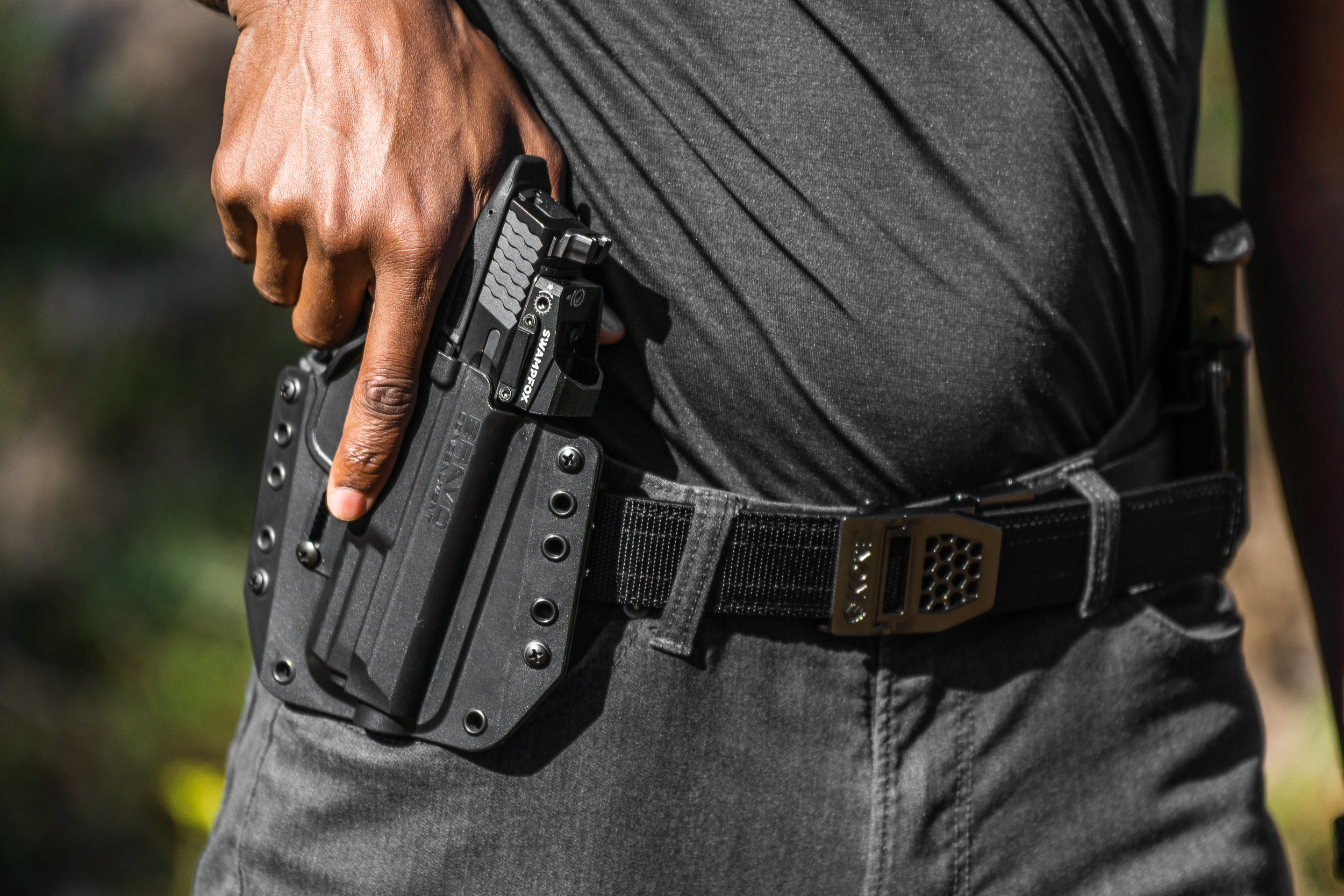Beyond the Barrel: What Every Responsible Gun Buyer Should Know Before Choosing a Firearm
By Management | Tactical Edge Blog
In the age of Instagram-ready pistols, viral gun reviews, and YouTube “experts,” making an informed decision about buying your first—or next—firearm has never been more challenging.
The glossy finishes, impressive specs, and passionate testimonials from your local range buddies or online forums can be alluring. But as we uncovered in our investigation, aesthetics and opinions mean little if the firearm doesn’t suit your real-world needs.
To help cut through the noise, we spoke with firearms instructors, industry professionals, and real users to reveal what truly matters when choosing a firearm—and why so many get it wrong.
The Real Question: Why Are You Buying This Gun?
Before you even look at brands or calibers, you need to confront a more personal question:
“What do I actually need this firearm for?”
It sounds simple, but many buyers never honestly assess their purpose. Is it for daily concealed carry? Defending your home? Competitive sport? Or are you planning for emergency preparedness?
Each answer points you toward different features, calibers, accessories, and even price points. Below, we break down those choices based on the most common firearm categories—with expert insight and real-world examples.
1. Everyday Carry (EDC) Handgun
Key Questions:
- Will I carry this daily?
- Will it print under my clothing?
- Can I trust it in an emergency?
🔍 Case Study: Carlos, 38, Orlando
Carlos carries a Glock 43X daily in an IWB (inside waistband) holster. He originally bought a full-size pistol based on YouTube reviews but found it too bulky for everyday wear. After taking a Valortec EDC class, he switched to a slimmer platform that better fit his lifestyle.
What to Look For:
- Caliber: 9mm is the gold standard for defense—manageable recoil, solid ballistics, and widely available.
- Brand Reputation: Glock, Sig Sauer, Smith & Wesson, and CZ offer reliable, time-tested options.
- Holster Support: Ensure the gun has compatible IWB/OWB/pocket/ankle holsters available.
- Night Sights: A must-have if you carry at night or in low-light environments.
2. Home Defense Handgun or Shotgun
Unlike EDC firearms, home defense weapons can be larger and more accessorized. But access and safety are critical.
Home Defense Handgun Tips:
- Quick-Access Storage: Biometric safes and bedside vaults keep you seconds away, but secure.
- Optics & Lights: A mounted flashlight or laser can be a game-changer at 3:00 AM.
- Caliber: Again, 9mm is a favorite—but .45 ACP and .40 S&W have loyal followers.
Home Defense Shotgun Tips:
- Barrel Length: 18–20 inches offers maneuverability through tight hallways.
- Ammo: 00 buckshot is powerful but consider #4 buckshot for reduced over-penetration in apartments.
- Action Type: Pump actions are classic and reliable, while semi-autos offer faster follow-up shots.
🔍 Pro Tip:
Practice reload drills and movement in your actual home layout. A shotgun may feel awkward in a narrow hallway, especially under stress.
3. Competition Firearms
Competitive shooting isn’t about looking cool—it’s about milliseconds, optics precision, and control.
🔍 Case Study: Lisa, 29, Tampa
Lisa competes in USPSA and runs a highly modified CZ Shadow 2. What started as a weekend hobby quickly evolved into a deep dive into aftermarket triggers, compensators, and red dots.
Considerations:
- Match Type: Choose your platform based on your sport (e.g., PRS, IDPA, 3-Gun).
- Customization: Optics-ready slides, extended mags, flared magwells, and tuned triggers are common.
- Price vs. Performance: Don’t skimp here. Competitive shooters often spend more on accessories than the gun itself.
4. Tactical Carbines
Whether for patrol use, ranch security, or personal defense, carbines bring speed and power.
Common Platforms:
- AR-15s: Highly customizable and ammo-friendly (.223/5.56).
- Pistol Caliber Carbines (PCCs): Easier recoil, same mags as handguns (e.g., Glock mags).
- AK-47s & Lever Guns: Rugged, reliable options with different mission profiles.
Optics:
- Iron Sights: Reliable back-ups.
- Red Dots: Fast target acquisition.
- LPVOs (Low Power Variable Optics): Versatile for close-to-mid-range engagements.
5. Hunting Rifles
The needs of a whitetail hunter in Ocala differ greatly from a western elk hunter.
Core Considerations:
- Caliber vs. Game: .30-06 for deer, .308 for hogs, .300 Win Mag for elk.
- Weight vs. Accuracy: A heavier rifle may shoot better but be a burden in the field.
- Optics: Don’t skimp here. A quality scope often costs more than the rifle—and it should.
🔍 Field Insight:
Many hunters overlook the importance of sling setup, weather resistance, and bipods—until they’re deep in the woods and regretting it.
General Firearm Buying Tips
1. Test Before You Buy: Many ranges offer rentals. Try multiple models before deciding. 2. Fit Matters: A firearm should feel like an extension of your hand. Too big or small affects recoil control and aim. 3. Community Feedback: Look for real-world reviews, not just influencers. Forums like AR15.com and pistol-forum.com can be goldmines of insight. 4. Budget Wisely: Don’t blow your entire budget on the gun—ammo, holsters, classes, and accessories are just as critical.
Final Thoughts: Education Trumps Ego
A firearm is a tool, not a trophy. The best gun for you is one you can handle confidently, deploy safely, and trust under pressure.
“Don’t chase trends. Train with intent.”

